
This parent guide supports parents in helping their child at home with the 6th grade Science content.
- Subject:
- Science
- Material Type:
- Reference Material
- Vocabulary
- Author:
- Kelly Rawlston
- Letoria Lewis
- Date Added:
- 10/11/2022

This parent guide supports parents in helping their child at home with the 6th grade Science content.

This resource accompanies our Rethink 6th Grade Science course. It includes ideas for use, ways to support exceptional children, ways to extend learning, digital resources and tools, tips for supporting English Language Learners and students with visual and hearing impairments. There are also ideas for offline learning.

Please make a copy and edit to fit the needs of your students.
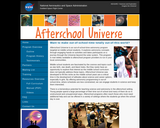
This astronomy program is designed for middle school children in out-of-school-time settings. The program explores basic astronomy concepts (like invisible light, telescopes) and focuses on the universe outside the solar system (stars, galaxies, black holes). The program is structured for use in a variety of settings, including astronomy days, summer camps, or year-long afterschool programs. Although session activities build concepts sequentially, each session activity is designed to be freestanding as not all participants may attend every session. A manual provides background information and descriptions of how to conduct each activity. A companion website provides additional information and resources for the program leader.
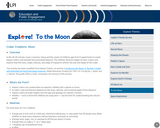
This is an activity about impact craters. Learners will experiment to create impact craters and examine the associated features. Then they observe images of lunar craters and explore how the mass, shape, velocity, and angle of impactors affects the size and shape of the crater. This activity is part of Explore! To the Moon and Beyond! - a resource developed specifically for use in libraries.

During the last sunspot cycle between 1996-2008, over 21,000 flares and 13,000 clouds of plasma exploded from the Sun's magnetically active surface. These events create space weather. Students will learn more about space weather and how it affects Earth through reading a NASA press release and viewing a NASA eClips video segment. Then students will explore the statistics of various types of space weather storms by determining the mean, median and mode of a sample of storm events. This activity is part of the Space Math multimedia modules that integrate NASA press releases, NASA archival video, and mathematics problems targeted at specific math standards commonly encountered in middle school textbooks. The modules cover specific math topics at multiple levels of difficulty with real-world data and use the 5E instructional sequence.

This is an activity about modeling the effect of wind on a sandy surface. Learners will use trays of sand and straws to recreate surface features of images of Mars. Participants test their ideas about how some of the features on Mars might have been produced. This is activity 4 of 9 in Mars and Earth: Science Learning Activities for After School.
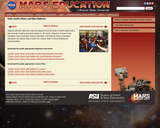
This is an activity about planetary sizes and distances. Learners will construct a scale model of the Earth, Earth’s Moon and Mars in relation to each other using balloons. They will use this model to predict distances and reflect on how scientists use models to construct explanations through the scientific process. The lesson models scientific inquiry using the 5E instructional model and includes teacher notesand vocabulary.

As science extension activities, this book of problems introduces students to mapping the shape of the Milky Way galaxy, and how to identify the various kinds of galaxies in our universe. Students also learn about the shapes and sizes of other galaxies in our universe as they learn how to classify them. The math problems cover basic scientific notation skills and how they apply to working with astronomically large numbers. It also provides exercises in plotting points on a Cartesian plane to map the various features of our Milky Way.
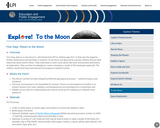
This kick-off activity sets the stage for further explorations and activities in Explore! To the Moon and Beyond! - a resource developed specifically for use in libraries. As a group, learners will discuss what they know about Earth's Moon. They read books to learn more about the lunar environment and history of exploration. They use their knowledge to create a drawing or model of the landscape (optional).

Learners will explore Jupiter's origins through three stories. First, they model their own lifetimes by tying knots in lengths of yarn to represent key events in their pasts. Then, children listen to and act out a cultural origins story, such as the Skytellers stories told by Native American master storytellers. Finally, they explore Jupiter's story by modeling a timeline from today back to its "birthday." They use the timeline to visually demonstrate that the Big Bang occurred much earlier in the past. Children will discover how the Juno mission to Jupiter will help unveil how our solar system - including Earth - came to be. The activities are from Explore! Jupiter's Family Secrets, a series designed to engage children in space and planetary science in libraries and informal learning environments.
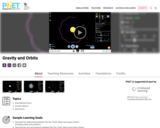
Sample Learning Goals
Describe the relationship between the Sun, Earth, Moon and space station, including orbits and positions
Describe the size and distance between the Sun, Earth, Moon and space station
Explain how gravity controls the motion of our solar system
Identify the variables that affect the strength of gravity
Predict how motion would change if gravity was stronger or weaker

This is an activity about utilizing proportional mathematics to determine the height of lunar features. Learners will use the length of shadows to calculate the height of some of the lunar features. This activity is Astronomy Activity 6 in a larger resource entitled Space Update.
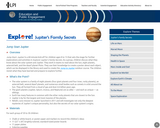
This is a kick-off activity about the solar system and Jupiter. Learners will discuss what they know, work in teams to read about the Sun, eight planets, asteroid belt, and the dwarf planet, Pluto. They use their knowledge to create a poster about each object, which can be displayed in the library and used in later activities. This activity is part of Explore! Jupiter's Family Secrets, a series designed to engage children in space and planetary science in libraries and informal learning environments.
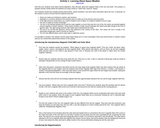
This is an activity about the magnetic fields of the Sun and Earth, and the interplanetary magnetic field, or IMF. Learners will engage in a question and answer dialogue, make connections using bar magnet examples and overhead transparencies, and ultimately write an assessment of concepts learned. This is Activity 1 in Session 3 of the Exploring Magnetism in the Solar Wind teachers guide.
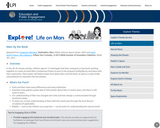
This is an activity about similarities and differences between the Earth and Mars. Learners will investigate how Mars compares to the Earth, working together to create an Earth-Mars Comparison Poster to post in the program facility/library and share with their community. Their poster will feature basic facts about Mars and the Earth, as well as a scale model using balloons to represent the two planets. It also includes specific tips for effectively engaging girls in STEM. This is activity 2 in Explore: Life on Mars? that was developed specifically for use in libraries.
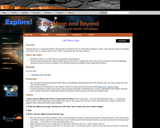
This is a lesson about NASA's Lunar Reconnaissance Orbiter (LRO). Learners will sing about the LRO mission to the Moon, learn that craters on the Moon may harbor water ice, and they discover how LRO is searching for this and other resources needed to build future lunar outposts. This is a good introductory activity. This activity is part of Explore! To the Moon and Beyond! - a resource developed specifically for use in libraries.
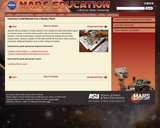
This activity is about the study of planetary samples. Learners will use samples of crustal material to sort, classify, and make observations about an unknown planet. From their observations, students will interpret the geologic history of their mystery planet and make inferences about past life or the potential for life on the "Mystery" planet. The lesson models scientific inquiry using the 5E instructional model and includes teacher notes and vocabulary.

In this Digital Universe activity, students practice the scientific skills of observation, inference, and modeling and learn about scale, perspective, and distance by building a three-dimensional model of something they usually perceive as two-dimensional. The 11-page printable PDF activity includes illustrated step-by-step instructions for the following hands-on and computer-assisted activities:Introducing the Constellations, Making a Two-Dimensional Constellation Model, Introducing Parallax and Luminosity, Using Parallax and Luminosity, and Viewing Orion in Three Dimensions.
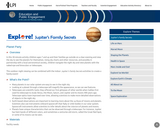
Learners and their families are encouraged to go outside on a clear evening and view the sky to see the planets for themselves. Using sky charts and other resources, and possibly in partnership with a local astronomical society, children navigate the night sky and view planets with the naked eye and binoculars or telescopes. This activity is part of Explore! Jupiter's Family Secrets, a series designed to engage children in space and planetary science in libraries and informal learning environments.